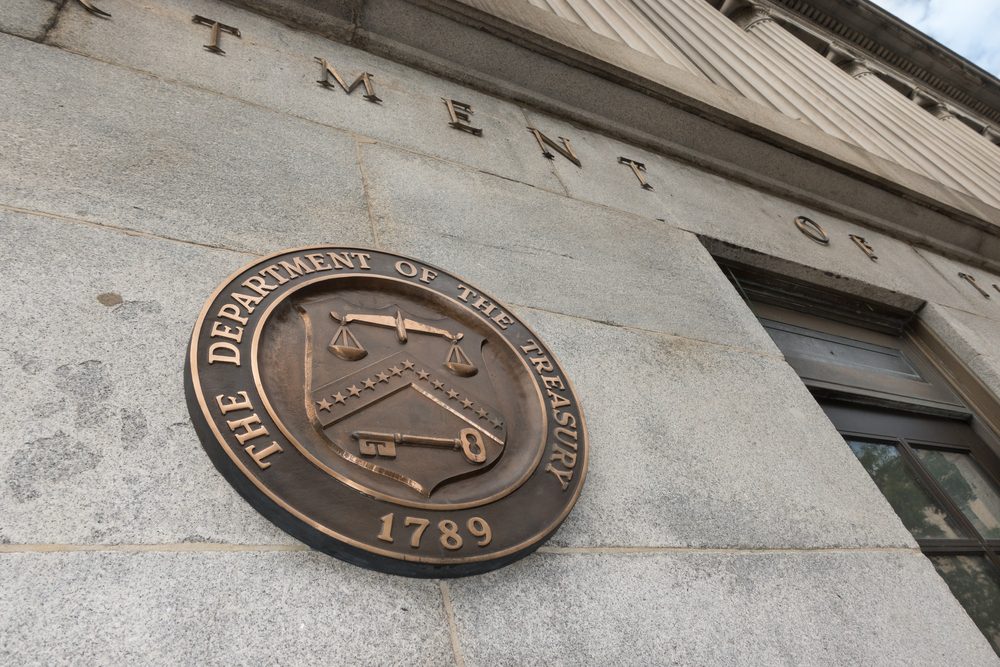Finance
Banks: Committed to social financing

This article first appeared in The Edge Malaysia Weekly on November 6, 2023 – November 12, 2023
Sun King, one of Citi’s partners, expands access to solar electricity in Kenya. (Photo by CITI)
Jorge Rubio, global head of Citi Social Finance, is not a regular banker. He often has to switch out of his suit and tie to more comfortable attire so he can visit entrepreneurs providing innovative solutions that address pressing social issues around the world.
Rubio transitioned from his corporate banker role to social finance in the early 2000s, after a visit to the south of Mexico. He saw for the first time how group lending and microfinance made a difference to the indigenous communities in the country.
“It was fascinating to see how the mostly women borrowers were getting access to working capital loans for the first time. Their portfolio quality was really good, meaning that they repay their loans. They just didn’t have access [to financing],” says Rubio, who has been working with Citi for 26 years.
The women were using the capital to expand their businesses, whether it’s a small saloon or a food stall. “When I saw that, I realised that personally, I want to dedicate my career to development finance. Citi has provided me with that opportunity because, with its very unique global footprint, we can take those experiences and replicate them across the world.”
In 2005, Citi started its microfinance team to support underserved communities, and Rubio was part of the efforts to expand this business to over 40 countries.
Three years ago, the unit was renamed Citi Social Finance to reflect the bank’s expanded focus on a wider set of social issues, which has become particularly relevant with the popularity of environment, social and governance (ESG) in the private sector.
The broader scope includes financing for solutions that address financial inclusion, access to basic services like connectivity, water and sanitation, education, healthcare and food security.

“At the end of the day, the ‘E’ (environment) does not work without the ‘S’. The whole low-carbon transition has to make sense socially as well.” – Rubio. (Photo by Low Yen Yeing/The Edge)
“Citi Microfinance was a business unit with different products that worked across the bank and in many geographies to expand access to financial services. In 2005, around 2.5 billion people in the world did not have access to financial services. Today, it’s around 1.7 billion [people], which means in the last couple of decades, as an industry, we have come a long way,” says Rubio.
But there is still a lot to do. “Today, there are around 3.6 billion people — that’s nearly 50% of the population — that do not have access to running water at home or sanitation. If you look at the different basic needs, the gap continues to be big and challenging across emerging markets.”
The rising awareness of ESG is helpful, as a wider pool of investors is now interested in social financing. Back then, it was mostly development finance institutions (DFI) that partnered with Citi to share risks and originate transactions on a larger scale, says Rubio.
“If you look at the picture today, it’s not only the DFIs. It’s impact investors, more traditional asset managers and, very importantly, the institutional clients of Citi that are looking at social finance as a valid asset class. This means it can have financial returns and, at the same time, achieve social impact.”

Citi joined forces with Compartamos Financiera in Peru to finance small and micro enterprises run by female entrepreneurs. (Photo by Citi)
Technology is an important driver
In 2022, Citi Social Finance mobilised over US$3 billion across the world, which Rubio says was their best year. Over US$600 million of these funds were allocated to Asia, which he identifies as one of the key regions for growth.
India, where microfinance institutions have a strong presence, is an important market. Indonesia and the Philippines, which have growing populations, are also interesting markets that can enable scale, he points out.
Another factor that is creating opportunities for social finance is technology, which is making access to the internet, digital payments and other basic services more direct, scalable and commercially viable.
For instance, in Kenya, Citi closed a securitisation transaction in May with Sun King, a company that finances home solar systems. It runs a pay-as-you-go model, where users make small, regular payments to access electricity. “That can help their children study at night and give them more hours of light, so that many of them who operate their businesses from home can open for more hours and generate more income,” says Rubio.
“When I was in Nairobi [Kenya] reviewing the due diligence on this transaction, a user of this service was telling us that it used to take him two hours every day to reach a place where he could charge his phone. These are life-changing solutions that we can help finance with our clients.”
Other deals that Citi Social Finance has done include funding for affordable housing loans in Indonesia, access to the digital economy in the Philippines and financing for small and medium enterprises as well as traditional microfinance in China, India and Bangladesh. Last year, it facilitated the development of a cookstove and water purifier carbon reduction project in Vietnam with several partners.
Rubio says the team is currently developing some transactions in Malaysia and is keen to do more in the country.

Citi partnered with Babban Gona Farmer Services Nigeria Ltd to support smallholder farmers in Nigeria. (Photo by Citi)
More financing for the ‘S’ in ESG
Citi has committed US$1 trillion (RM4.72 trillion) to sustainable finance by 2030, and social finance in emerging markets will be one of the key focuses. The funds are deployed using various methods, whether via securitisation, bilateral loans, loan syndication, bonds or trade finance.
“At the end of the day, we are a relationship bank. We like to offer our clients a suite of products that are appropriate to the phase they are in,” says Rubio.
Citi began its social finance journey by helping microfinance institutions that struggled to obtain capital in local currencies, which was what the global bank was able to offer. Its footprint around the world also helps the bank expand on social financing, Rubio believes.
This is even as financing for environmental initiatives tends to take the limelight now. “The growth in green [financing] sort of precedes the ‘S’ (social financing). For example, green bonds and the global frameworks were developed first. Now, social [bonds] are catching up and I think there are enormous opportunities. At the end of the day, the ‘E’ (environment) does not work without the ‘S’. The whole [low-carbon] transition has to make sense socially as well,” says Rubio.
Citi issued a US$1 billion bond in 2021 to finance social projects in emerging markets.
“We have a public framework in place with a second-party opinion. It’s audited and we report back to investors where the money is going and the impact we’re having,” says Rubio.
He hopes that social finance will continue to grow and become a valid asset class for investors. Citi Social Finance is a commercial unit, Rubio stresses, which means “everything we do needs to meet or exceed the return requirements of the bank”.
He hopes that with more private capital flowing into these areas, coupled with innovation, new technologies and disruptive business models, access to basic services can be scaled. Ultimately, this will result in a more equitable world.
Save by subscribing to us for your print and/or digital copy.
P/S: The Edge is also available on Apple’s App Store and Android’s Google Play.

Finance
Basel Committee Reports on Digitalisation of Finance

- The Basel Committee has published a report on the implications of the digitalisation of finance for banks and supervision.
- The report considers both the benefits and risks of new technologies and the emergence of new technologically enabled suppliers for the provision of banking services.
- It identifies eight implications for banks and supervisors relating to macro-structural elements, specific digitalisation themes, and capacity building and coordination.
The Basel Committee on Banking Supervision published a report that considers the implications of the ongoing digitalisation of finance on banks and supervision. The report builds on the Sound Practices: implications of fintech developments for banks and bank supervisors published in 2018, and takes stock of recent developments in the digitalisation of finance.
The report reviews the use of key innovative technologies across various aspects of the banking value chain, including application programming interfaces, artificial intelligence and machine learning, distributed ledger technology and cloud computing. It also considers the role of new technologically enabled suppliers (eg big techs, fintechs and third-party service providers) and business models.
While digitalisation can benefit both banks and their customers, it can also create new vulnerabilities and amplify existing risks. These can include greater strategic and reputational risks, a larger scope of factors that could test banks’ operational risk and resilience, and potential system-wide risks due to increased interconnections. Banks are implementing various strategies and practices to mitigate these risks, but effective governance and risk management processes remain fundamental.
Digitalisation raises regulatory and supervisory implications for both banks and supervisors. These include:
- monitoring evolving risks and adopting a responsible approach to innovation;
- safeguarding data and implementing robust risk management processes; and
- securing the necessary resources, staff and capabilities to assess and mitigate risks from new technologies and business models.
The Committee will continue to monitor developments related to the digitalisation of finance. Where necessary, it will consider whether additional standards or guidance are needed to mitigate risks and vulnerabilities.
Source: BIS
Finance
Treasury Department to Use ‘Automation and Innovation’ to Fight Illicit Finance

The Department of the Treasury has outlined the priorities it will pursue this year to step up the fight against illicit finance.
The agency aims to increase transparency, leverage partnerships and support responsible technological innovation, it said in a Thursday (May 16) press release announcing the publication of its “2024 National Strategy for Combating Terrorist and Other Illicit Financing.”
One of the Department’s priorities for the year is closing legal and regulatory gaps in the country’s anti-money laundering and combating the financing of terrorism (AML/CFT) framework, according to the release. It aims to do so by operationalizing the beneficial ownership information registry; finalizing rules covering the residential real estate and investment advisor sectors; and assessing the vulnerability of other sectors.
A second priority is promoting a more effective and risk-focused AML/CFT regulatory and supervisory framework for financial institutions, the release said. The Department will work to do so by providing clear compliance guidance, sharing information and providing resources for supervision and enforcement.
The Department also aims to enhance the operational effectiveness of law enforcement, other U.S. government agencies and international partnerships to combat illicit finance, per the release.
The fourth priority announced in the press release is realizing “the benefits of responsible technological innovation” by developing new payments technology, supporting the use of new mechanisms for compliance, and using automation and innovation to find new ways to fight illicit finance, the release said.
“In this critical moment for our national and economic security, we need to continue to close the pathways that illicit actors seek to exploit for their schemes,” Brian E. Nelson, Under Secretary of the Treasury for terrorism and financial intelligence, said in the release. “We recognize the threat illicit financial activity represents to our national security, economic prosperity, and our democratic values, and are focused on addressing both the challenges of today and emerging concerns.”
These recommendations are meant to address key risks the Department of the Treasury identified in February in its “2024 National Money Laundering, Terrorist Financing, and Proliferation Financing Risk Assessments.”
In another recent move, the Treasury Department said in April that it wants more tools to curb terror financing.
In testimony released ahead of an April 9 appearance before the Senate Banking Committee, Deputy Secretary Wally Adeyemo said terrorist groups and state actors continually “seek new ways to move their resources in light of the actions we are taking to cut them off from accessing the traditional financial system.”
For all PYMNTS B2B coverage, subscribe to the daily B2B Newsletter.
Finance
The Great Financial Crisis kick started the private credit boom, but SVB was its true 'watershed' moment, Sixth Street co-president says

The Global Financial Crisis threw millions of Americans out of their homes and jobs, upending the entire economy. But for the private credit industry, it was actually an awakening of sorts.
Over the past few decades, U.S. banks’ problems have signaled opportunity for the private credit market, and that’s particularly true of the Global Financial Crisis and the collapse of Silicon Valley Bank last March. When banks have issues, U.S. businesses’ desire for capital rarely wanes dramatically, and that leaves room for alternate lenders.
At the Fortune Future of Finance conference on Thursday, Joshua Easterly, co-CIO and co-president of the global investment firm Sixth Street, explained how he was working at Goldman Sachs after the Global Financial Crisis in 2009, running a team that did public and private market transactions in distressed debt and special situations, when he came to the realization that the lending industry had changed forever.
“It was the intended consequence, not the unintended consequence of regulations after the Crisis,” he said of the private credit boom. “Policymakers…wanted to figure out how to diffuse risk away from the taxpayer, but you couldn’t crush the economy by reducing credit, and so private credit history grew.”
Easterly argued that the private credit industry has a “better model” than the banking industry when it comes to lending risk, because it holds more capital for loans on balance sheets. And that made him come to a startling realization in 2009. “Huh? I think I need to go find a new job,” he recalled saying to a colleague. “So [the move to private credit] was a little bit about necessity.”
Carey Lathrop, partner and chief operating officer of credit at Apollo Global Management, echoed Easterly’s comments, noting that when he started in the private credit industry “it was clear how hard it was to get things done that made economic sense” in public markets after the GFC.
The rise of private credit since 2008 has been historic, to say the least. Before the crisis, there was under $400 billion in total assets and committed capital in private credit. In 2023, that number jumped to $2.1 trillion, according to the International Monetary Fund. But it wasn’t just the Crisis that spurred the private credit boom. After the collapse of several regional banks in March 2023, headlined by the tech startup focused Silicon Valley Bank, businesses nationwide once again turned to private credit amid a liquidity crunch.
While SVB struggled after rapidly rising interest rates devalued its long-dated bonds, leading to a run on deposits from its list of influential and well-connected clientele, the manner in which private credit operates can lead to more stability in trying times.
Apollo’s Lathrop explained that banks like SVB “had this mismatch with a lot of long-term assets with assets with short term liabilities” that led to unrealized loan losses on their books as rates soared. But private credit doesn’t have this same issue. “We don’t run the [private credit] business that way,” he noted. “We were much more match funded.”
To his point, unlike banks, which fund a majority of their lending through customer deposits (and often uninsured deposits), private credit funds tend to use money from wealthy investors and institutions to make loans, leaving them less exposed to rising interest rates.
Sixth Street’s Easterly said the SVB drama essentially showed “the robustness” of the private credit] business model, leading a raft of new clientele. “I think it was a watershed moment for the value of the asset class.”
-

 Politics1 week ago
Politics1 week ago'You need to stop': Gov. Noem lashes out during heated interview over book anecdote about killing dog
-

 News1 week ago
News1 week agoMan, 75, confesses to killing wife in hospital because he couldn’t afford her care, court documents say
-

 Politics1 week ago
Politics1 week agoRFK Jr said a worm ate part of his brain and died in his head
-

 World1 week ago
World1 week agoPentagon chief confirms US pause on weapons shipment to Israel
-

 Politics1 week ago
Politics1 week agoHere's what GOP rebels want from Johnson amid threats to oust him from speakership
-

 World1 week ago
World1 week agoPro-Palestine protests: How some universities reached deals with students
-

 World1 week ago
World1 week agoConvicted MEP's expense claims must be published: EU court
-

 Politics1 week ago
Politics1 week agoCalifornia Gov Gavin Newsom roasted over video promoting state's ‘record’ tourism: ‘Smoke and mirrors’















